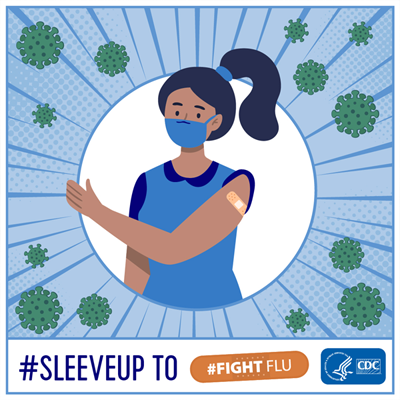How CDC Estimates the Burden of Flu Illness Averted by Vaccination
CDC calculates the number of flu illnesses, medical visits, hospitalizations, and deaths prevented by vaccination using a model that incorporates season-specific data on burden of disease, vaccine coverage and VE for five age groups. More detailed descriptions of the method can be found in an article by Tokars, et al.external icon (1), or in the article by Rolfes, et alexternal icon. (2), on the impact of influenza vaccination during the 2017–2018 influenza season.
CDC uses the annual estimates of influenza vaccination coverage by month during each season, and the final end-of-season vaccine effectiveness measurements to estimate how many persons were not protected by vaccination during the season and thus were at risk for influenza.
The rate of each outcome (illnesses, medical visits, hospitalizations, or deaths) among persons at risk was then used to estimate the number of influenza-associated outcomes that would have been expected in the same population if no one had been protected by vaccination. Finally, the outcomes prevented by influenza vaccination were calculated as the difference between outcomes in the hypothetical unvaccinated population and the observed vaccinated population.
Calculations are stratified by month of the year to account for annual variations in the timing of disease and vaccination and then summed across the whole season.
- Tokars JI, Rolfes MA, Foppa IM, Reed C. An evaluation and update of methods for estimating the number of influenza cases averted by vaccination in the United States. Vaccine 2018; 36(48): 7331-7.
- Rolfes MA, et al. The U.S. Flu VE Network, the Influenza Hospitalization Surveillance Network (FluSurv-NET), and the Assessment Branch, Immunization Services Division, Centers for Disease Control and Prevention; Effects of Influenza Vaccination in the United States during the 2017–2018 Influenza Seasonexternal icon, Clinical Infectious Diseases, , ciz075
